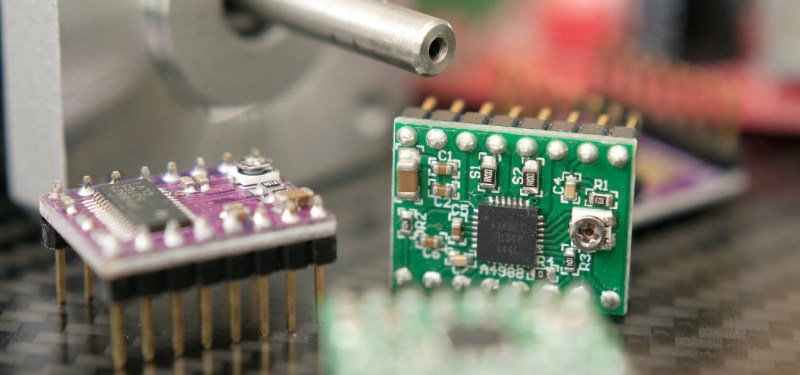Community, Leadership, Experimentation, Diversity, & Education
Pittsburgh Arts, Regional Theatre, New Work, Producing, Copyright, Labor Unions,
New Products, Coping Skills, J-O-Bs...
Theatre industry news, University & School of Drama Announcements, plus occasional course support for
Carnegie Mellon School of Drama Faculty, Staff, Students, and Alumni.
CMU School of Drama
Tuesday, August 30, 2016
How Accurate Is Microstepping Really?
Hackaday: Stepper motors divide a full rotation into hundreds of discrete steps, which makes them ideal to precisely control movements, be it in cars, robots, 3D printers or CNC machines. Most stepper motors you’ll encounter in DIY projects, 3D printers, and small CNC machines are bi-polar, 2-phase hybrid stepper motors, either with 200 or — in the high-res variant — with 400 steps per revolution. This results in a step angle of 1.8 °, respectively 0.9 °.
Subscribe to:
Post Comments (Atom)

1 comment:
Up until last year I had no knowledge of what a stepper motor did but during one of my class projects I decided to check them out after realizing I needed the torque. The first problem I ran into was precision of the axel. I needed it to know its “shaft precision” and preform the same amount of revolutions each time. I quickly learned that I wasn’t going to have the accuracy need and I moved on to a simpler solution that involved a limit switches and standard DC motors. It is really interesting to see the information on the graphs given in the article, not only is it a good reference but I also enjoyed seeing that I wasn’t the only that had trouble with my stepper. Hopefully there will come a time where I can use a stepper and maybe make a cool Arduino project with them… but until then Ill keep enjoying the data.
Post a Comment